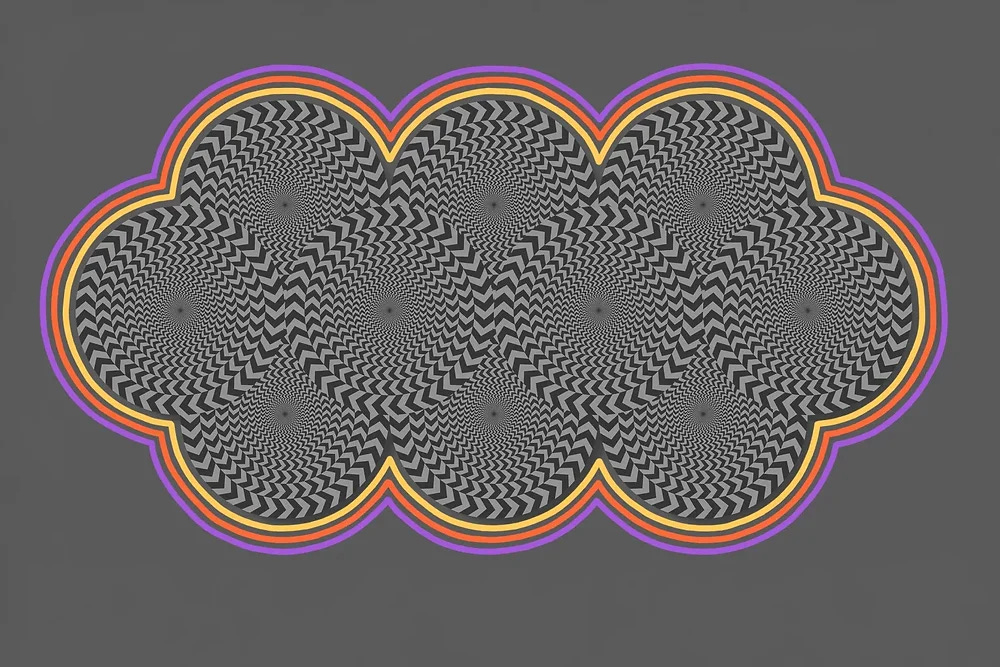The Intelligence Gap in a Changing World
Technology is evolving faster than human cognition. AI can now process, predict, and generate content at speeds we can barely comprehend. Quantum computing is breaking the rules of classical physics. Decentralized networks are shifting how information, finance, and power operate.
And yet, most of us are still using outdated cognitive models—linear, rigid, and slow.
As the world accelerates, we’re not just experiencing information overload; we’re experiencing cognitive obsolescence. Our education, training, and mental habits haven’t adapted to match the pace of an exponentially evolving world.
The result? Anxiety, decision paralysis, burnout, and a growing divide between those who thrive in complexity and those who feel like they’re falling behind.
Traditional intelligence models—IQ, rational analysis, and even emotional intelligence—are no longer enough. These frameworks were designed for a slower, more predictable world. What goes beyond these models, offering an adaptable, multi-modal intelligence that aligns with the fluidity of our new reality?
The solution is not just to learn more—it’s to think differently.
This is where Hypercognizance comes in.
The Origin of Hypercognizance
In a recent article, I described a sort of second spiritual awakening that has occurred for me in the past couple months—lifting me out of jadedness and back into synchronicity. In the process of my own self-inquiry I have been catching big fish from the ocean of consciousness as David Lynch would say. I’ve identified several external confirmations of a measurable shift in human consciousness that I believe we are on the precipice of now. My primary motivation is always to ask the question: How can I translate this in a digestible way for those who remain skeptical and how can I be of service to helping facilitate this shift even further for the benefit of all beings? It’s a feedback loop that always leads me back inward, where all the answers arise.
The term Hypercognizance came to me in a very clear vision during meditation—a future news article announcing a major initiative in cognitive evolution. I had never encountered the word before. When I researched it, I found only a few scattered references to "hyper-cognition," mostly in psychological studies, but nothing framing it as a comprehensive model for consciousness development and expansion.
In existing research, hyper-cognition has been described as an individual's ability to recognize, categorize, and analyze mental processes beyond the typical range of awareness. Studies in cognitive psychology link hyper-cognition to advanced metacognition, high-level abstraction, and rapid pattern recognition. Many of these studies focus on individuals with neurodivergent traits, particularly those on the autism spectrum, where heightened cognitive awareness and pattern detection have been observed. However, the research largely frames this as an isolated trait, rather than as a trainable and adaptable innate capacity of human evolutionary potential.
This vision felt profound, not just because the term was unfamiliar, but because it perfectly described what I had already been seeing: a shift in human intelligence that is not just about information processing but about an entirely new way of thinking, perceiving, and interacting with reality itself.
What Is Hypercognizance?
Hypercognizance is a proposed cognitive framework—the ability to enter, sustain, and navigate expanded awareness with deliberate training. The trainable aspect lies in developing the ability to achieve and maintain this state at will as well as the ability to consciously shift between different states of awareness, perception, and cognition on command. It is about training the mind to operate beyond conventional thinking patterns, integrating intuition, high-speed pattern recognition, nonlinear problem-solving, and expanded awareness.
Rather than being trapped in habitual thought loops, those who cultivate Hypercognizance can adapt fluidly to different cognitive modes, allowing for better decision-making, increased creativity, and enhanced perception of reality itself.
This is not science fiction, even if it seems like we’re now living in a sci-fi world. While this may sound speculative, emerging research and experiential accounts suggest that cognitive evolution is not just a possibility but an unfolding process we are beginning to explore. Hypercognizance is not a skillset in itself, but a cognitive state that can be cultivated through deliberate training grounded in neuroscience, psychology, and perhaps, even in ancient wisdom traditions.
Why We Need Hypercognizance Now More Than Ever
Rather than seeing intelligence as fixed, Hypercognizance suggests that human cognition is still evolving, capable of expanding in ways we are only beginning to understand. The modern world requires a different kind of intelligence—one that is adaptive, expansive, and capable of processing vast amounts of information without overwhelm.
Consider these shifts:
AI is evolving exponentially – Machines can now replicate and even surpass human cognition in some areas. The ability to navigate an AI-driven world requires thinking beyond rigid logic into intuitive and nonlocal cognition.
Quantum Mechanics is rewriting reality – The classical Newtonian model is being replaced with a probability-based, multidimensional understanding of existence. This requires a cognitive shift to embrace uncertainty and perceive reality through multiple lenses. (I explored this in detail in my discussion of quantum reality engineering and reprogramming in previous articles.)
Decentralization is disrupting power structures – From finance to information distribution, top-down control is dissolving. To thrive in a decentralized world, one must develop pattern recognition, rapid adaptability, and collective intelligence. Although traditional power structures still dominate much of the public's awareness, the rapid decentralization of information, finance, and governance is reshaping global systems in ways that cannot be ignored. These shifts demand new cognitive adaptations, as centralized models of control give way to decentralized, self-organizing networks.
The ability to synthesize complexity, adapt to rapid change, and access higher states of awareness may soon become essential as we navigate an increasingly complex and rapidly evolving world, especially as we move from a Newtonian materialist paradigm to a quantum reality.
How to Train for Hypercognizance
Flow states—those moments of effortless performance and deep immersion—are well-documented in elite performers, athletes, and creatives. These states allow for heightened focus, intuition, and cognitive flexibility. What if we could train to keep the faucet flowing?
Hypercognizance is not an abstract concept. It is something we can actively cultivate through a combination of neuroscience-backed techniques and ancient practices.
Brainwave Training – Learning to shift between beta (focus), alpha (creativity), theta (intuition), and gamma (hyper-awareness) states allows for fluid mental agility.
Neuroplasticity & Prompted Affirmations – Just as AI is trained through prompting, we can reprogram our subconscious mind using targeted affirmations, especially in altered or expanded states of consciousness.
Cognitive Mode Switching – Techniques like breathwork, meditation, and movement-based cognitive training allow for rapid shifts between analytical, intuitive, and expanded states of awareness.
Myth, Archetypes & Symbolic Cognition – Ancient wisdom traditions have long used myth and symbols as ways to encode nonlinear intelligence. Understanding these aspects of consciousness enhances intuitive pattern recognition.
Expanded Awareness Practices – Lucid dreaming, remote viewing, and vibrational coherence training help cultivate nonlocal cognition and enhanced perception. Activation of extra sensory perception (ESP) or psionic capabilities may prove to be essential for navigating the coming decades.
The goal is to develop the ability to achieve and sustain access to Hypercognizance at will, refining the mental agility required to shift between states of awareness and cognitive processing with greater intentionality.
In many ways, the human subconscious operates like a highly complex computer—an intricate system of stored programs, patterns, and conditioned responses. Just as AI models refine themselves through reinforcement learning, we too can rewrite our mental code, optimizing our cognitive architecture for greater adaptability, perception, and intelligence. (I explored this concept in depth in my last article). Hypercognizance arises from mastering this process, consciously choosing how we engage with reality rather than being dictated by outdated mental scripts.
The Future Belongs to the Hypercognizant
As AI, quantum mechanics, and decentralization continue to reshape our world, those who cultivate cognitive adaptability, intuitive intelligence, and expanded perception will be at the forefront of the new paradigm.
This is not about intelligence in the traditional sense—it’s about learning to operate in an expanded mode of consciousness. I want to stress here that this isn’t something only for the gifted or privileged—Hypercognizance may be achievable regardless of circumstance because it implies that every human being has innate within them latent or suppressed potentials and capacities that can be corrected, trained, and encouraged.
In the next installment, we’ll explore how Hypercognizance is already emerging—sometimes in ways that go unnoticed, dismissed, or even suppressed. But what if these cognitive anomalies are not errors, but early indicators of an evolutionary shift? What if the future of intelligence is already here—hidden in plain sight?
(For those who are serious about training for Hypercognizance, I’ll be weaving some of these concepts into Phase Sync, where we take these principles and apply them experientially in a 13 week course starting March 17th, 2025.)








See Rupert Sheldrake morphogenetic fields and Jung and Eastern Religion. I do feel a shift in Zeitgeist and I think the general conscious takes from the collective in jumps -like when electrons move to higher levels. You are not alone.
Interesting term